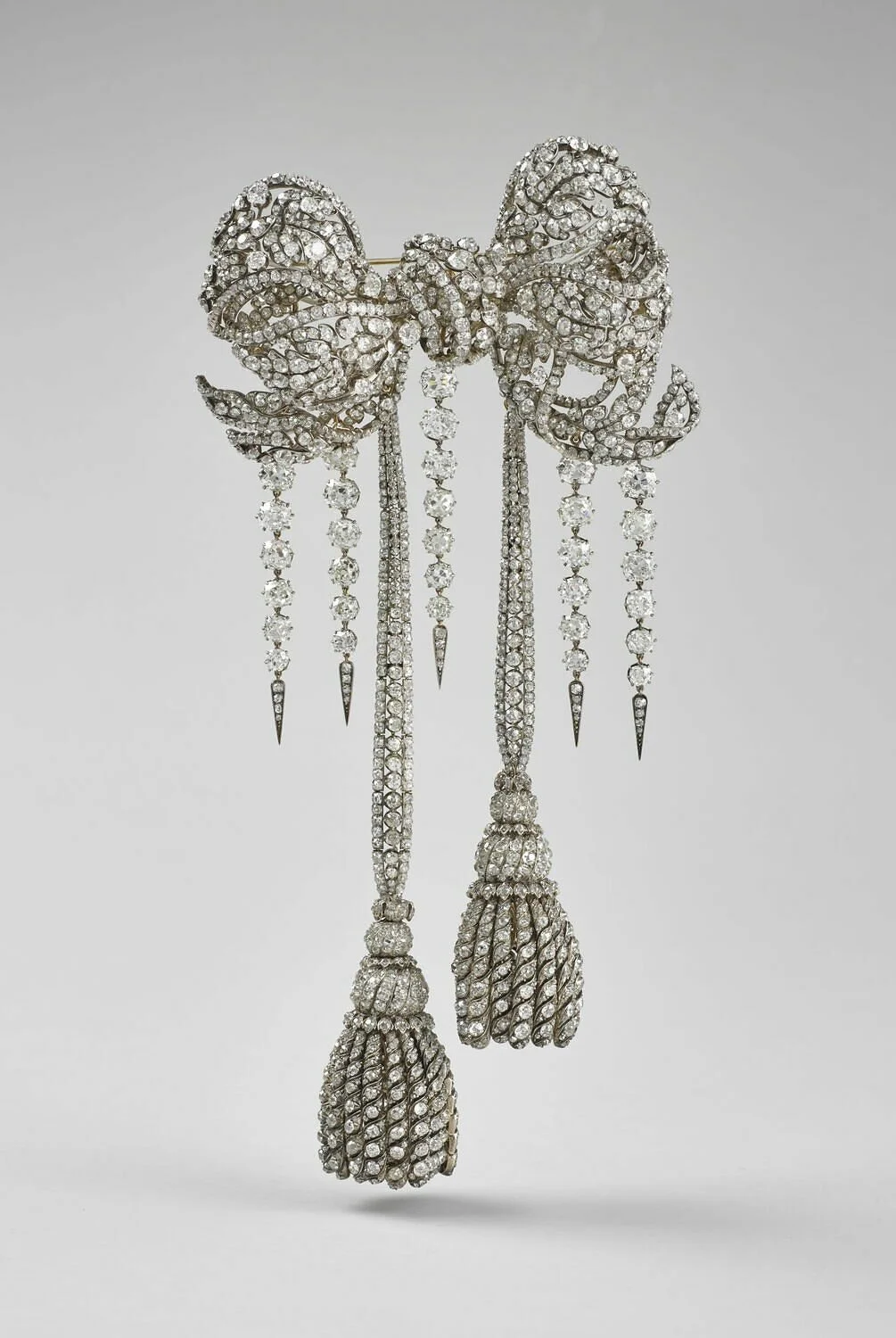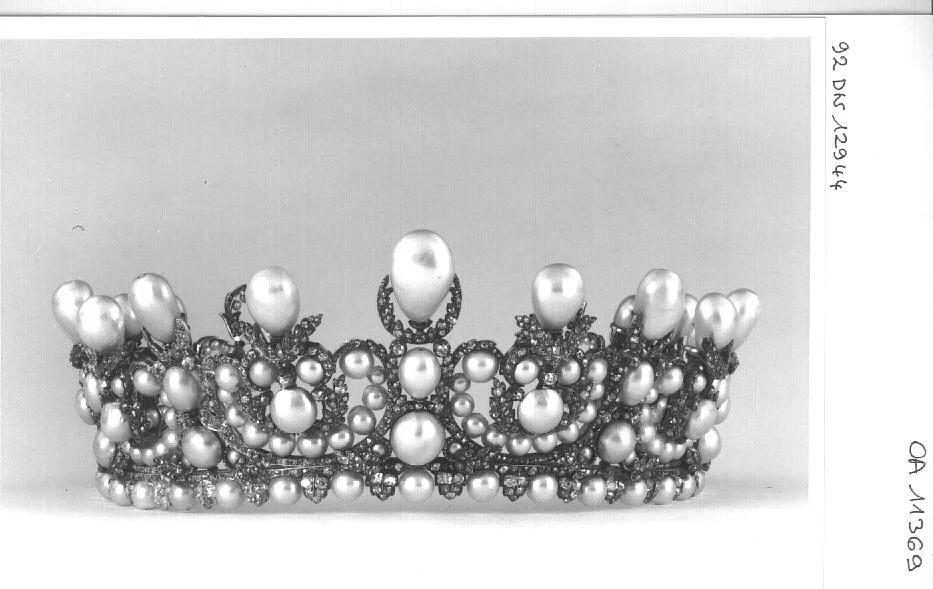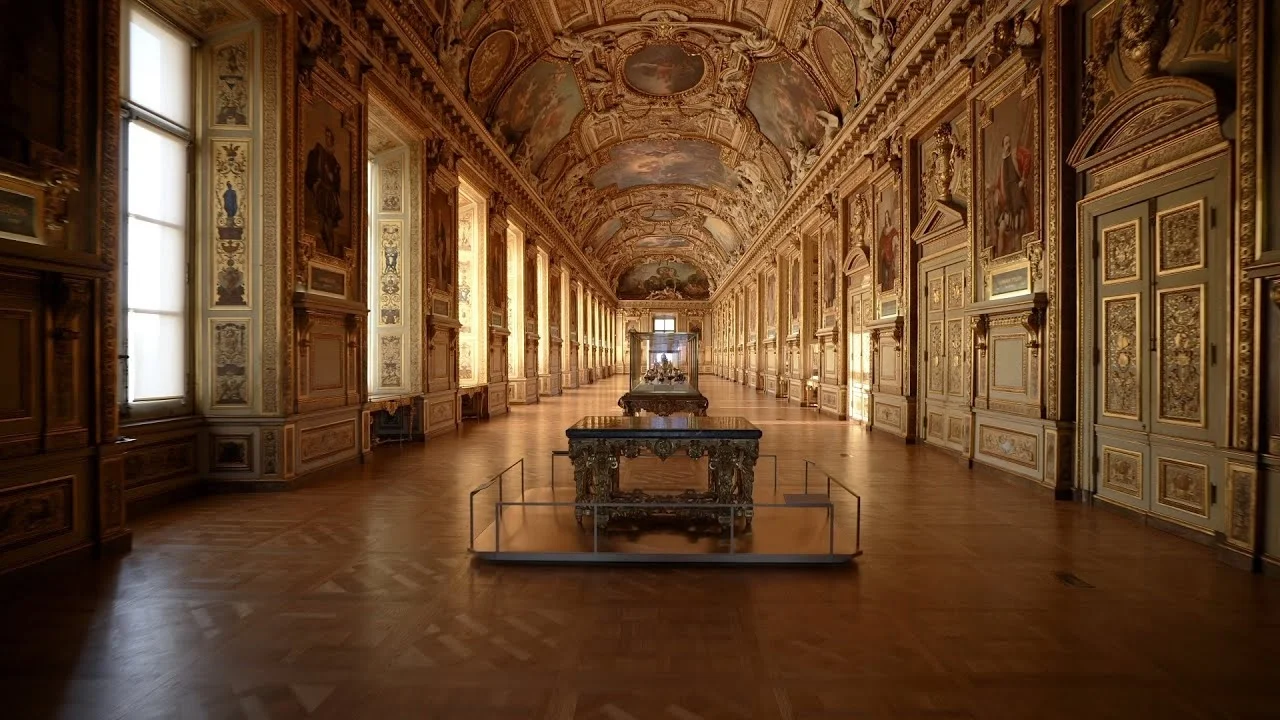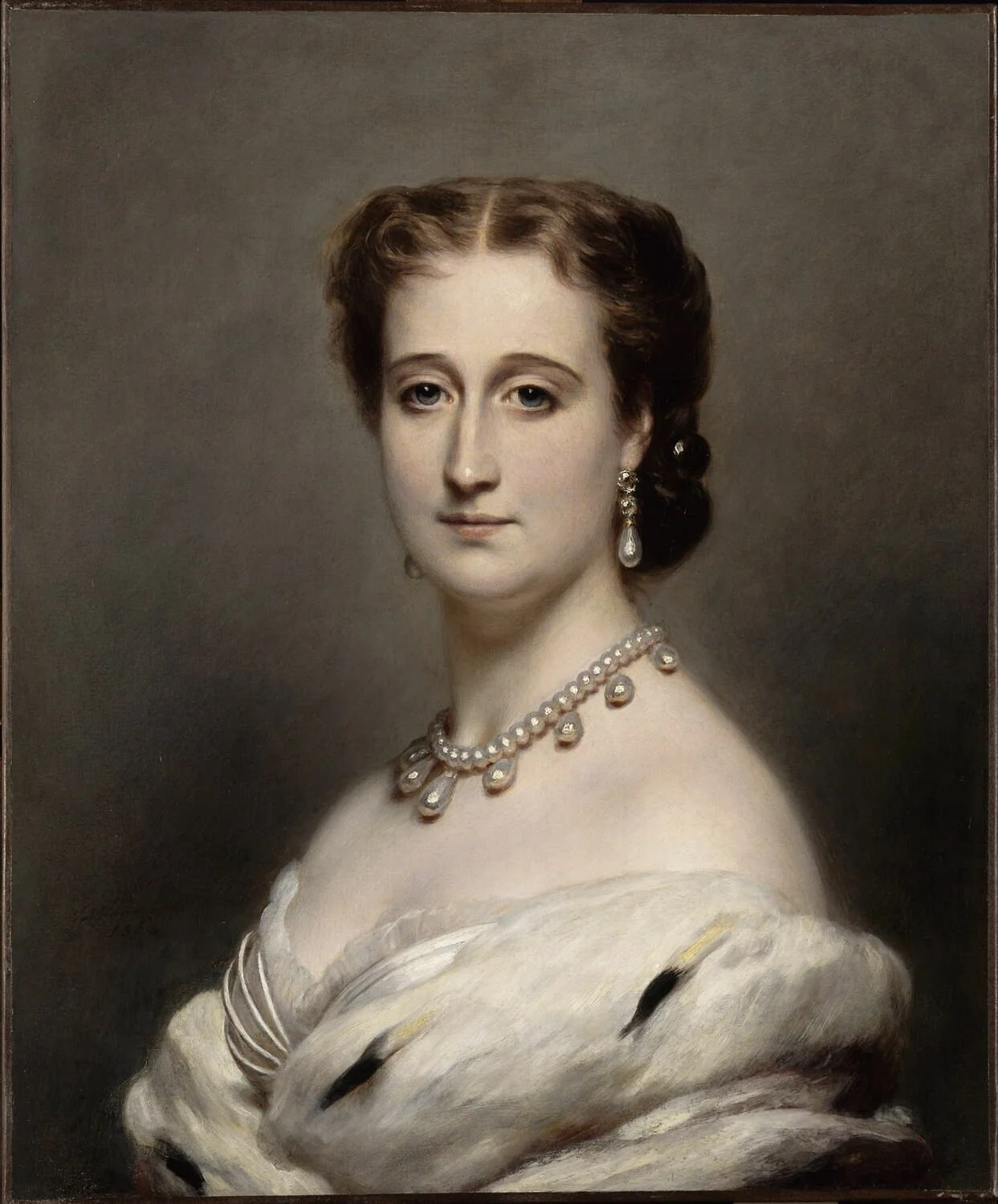If There’s One Thing We Know About the Louvre Heist, It’s That the Internet Loves a Sophisticated Criminal
In the age of digital voyeurism, even crime has become entertainment.
If There’s One Thing We Know About the Louvre Heist, It’s That the Internet Loves a Sophisticated Criminal
On October 19th, at 9:30 am local time, shortly after the museum opened for the day, four unknown suspects arrived at the Louvre with a ladder, power tools, and a plan. Two of the thieves entered the museum’s Galerie d’Appollon, which houses some of Europe’s most prized crown jewels, the likes of which belonged to everyone from the numerous wives of Napoleon(s) throughout history, to Marie Antoinette herself.
The duo chiseled a rectangular hole into the southernmost window of the gallery, avoiding CCTV in their strategic entrance. In seven short minutes, the pack managed to swipe eight pieces in total, including a tiara, a necklace, and a single sapphire earring from a set once owned by the Queens Marie-Amelie and Hortense. The set contains twenty-four Ceylon sapphires and one thousand and eighty-three diamonds, each of which can be detached and worn as individual brooches. The thieves’ haul continued with the brooch and tiara of Empress Eugénie of Austria, wife of Napoleon III, as well as her crown, which was dropped during the thieves’ exit, leaving the piece damaged in the process. Additionally taken was an emerald necklace and a set of earrings gifted to Empress Marie Louise by her (famously ex) husband, Napoleon I.
Courtesy of the Grand Louvre, Crown of Empress Eugénie of France
Courtesy of the Grand Louvre, Brooch of Empress Eugénie of France
The Louvre is No Stranger to Art Crime
This robbery joins a long list of devastating losses from the Louvre, most notably, the theft of the Mona Lisa in 1911, which was eventually recovered in Florence several years later. Although this particular heist is the first of this century that the Louvre has faced, preceded by the theft of Corot’s Le Chemin de Sèvres in 1998, the overt and sudden nature of the crime has raised concerns amongst viewers and patrons alike.
Ironically, this heist comes only months after French President Emmanuel Macron’s €800million ($900million USD) pledge for the restoration of the Louvre, a part of his “New Renaissance” initiative, which indeed included updates to the security systems of the museum. While officials and Paris police work to identify the perpetrators, many spectators are left to wonder if such precious works of art are safe in the museum, as well as the greater implications of such a heist on the value of historical artistry.
The Louvre has disclosed that only one of the three rooms of the gallery contained CCTV, allowing for easy access to the priceless jewels without being detected by museum security. Since his re-election in 2022, President Macron has faced numerous criticisms from government officials and civilians alike, many of which regard misplaced priorities and the use of funds. Just this October, a new poll revealed that his national approval rating has dropped by three points, bringing it to a historical low of 14%. Macron’s “New Renaissance” initiative looked to restore the value of European artistry and honor the legacy of the pieces in French history. The loss of these jewels, despite the push for increased security and protection within the Louvre, is an exceedingly public demonstration of the fragility of the very institutions that have traditionally defined European excellence.
Courtesy of the Grand Louvre, Galerie d’Apollon
Why the Internet Can’t Look Away
Many have turned to social media to express their conflicting views on the crime; some attest to the fear that many patrons of the arts hold after the thievery, while others have conveyed a level of excitement for such a spectacular show of public criminal activity. The ease of the break-in has further emphasized the preexisting notion amongst many Parisians of a lack of trust towards large institutions, such as the Louvre. How can a place so easy to infiltrate be entrusted to hold the history of the nation, much less that of the greater Western world?
Conversely, the heist has sparked an additional response from some: a deep infatuation with the heist. In an era dominated by cybercrime, digital terrorism, and the looming threat of global warfare, an “art heist” is not a frequent headline. Honestly, it is near refreshing. There is something romantic about the mystique of it all, from the pieces stolen to the abrupt and public nature of the crime. And while the Louvre has physically lost the jewels from their gallery, they have simultaneously gained a commodity which may be equally as valuable: views.
In the age of digital voyeurism, even crime has become entertainment. The robbery is a digestible story, yet mysterious, making it the perfect topic for digital obsession. A new generation of people, who have grown up in times of political unrest and warfare, are being exposed to a classical act of thievery. They are watching, and their eyes have the power to change society’s understanding of the importance of art. People have taken to social media to share their personal interpretations of the robbers. Would they have listened to Lorde’s The Louvre during their entrance? Or perhaps The 1975’s Robbers as they escaped to the Paris streets on scooters. However, beyond the TikTok edits and Reddit theories lies a deeper insight into why we as a society are so interested in this particular robbery.
The jewels stand for more than simply their monetary value; they are also a testament to the impact that art has on economics and politics. There are now seven jewelry-sized holes in the Galarie d’Appollon. In their place now lies a new legacy of artistry, one championed by crime.
Courtesy of the Grand Louvre, Portrait de l'impératrice Eugénie, 1864
Behind the Stolen Jewels is a Fashion Icon
The Louvre has essentially been “Bling-Ringed”, to tie the situation to Sofia Coppola’s 2013 adaptation of a Vanity Fair article regarding the real teenage heists of Hollywood stars via the use of early internet stalking skills. In a way, they are not far off.
Amongst the “victims” of the jewelry heist is Empress Eugénie of France, wife of Napoleon III, but more notably a quite influential figure in fashion history. Her bold style, frequently commissioned and customized pieces, and relentless innovation led the Empress to be known as one of the most prominent fashionistas of her time, as seen through her introduction of the idea of “Empress Blue”. Furthermore, Eugénie is credited for the popularization of the iconic Louis Vuitton trunk, which was originally crafted to carry her luggage in a more stylish fashion than regular baggage. It was this commission that affirmed the career of Vuitton, launching the brand from a Seine-side vendor to a global giant of the fashion industry.
While Empress Eugénie is long lost, her legacy continues to hold strong, further highlighted by the recent attention placed on her crown jewels. France has stood without a monarch since 1780, yet royalty is innately inseparable from the French legacy. These jewels were not chosen by accident. While the exact motives of the thieves are unknown, experts in high-profile art crime speculate that the stolen jewels are to face one of two fates: being sold off on the black market to be held by a buyer, or being melted down and redistributed for parts.
Both possibilities share one crucial attribute: the privatization and erasure of royalty in art. If sold to a buyer, these pieces, as well as the power that they wield, would become simply a material possession, rather than a public display of history. However, if destroyed, the powers at work make a sharp comment on the nature of history itself. This would be to say that history is fleeting, and with that, its value. Perhaps these jewels have served their purpose, and in modernity are now meant to be transformed into something new. This idea coincides with those of pushes for changes in French administration, spearheaded by the desire to reject traditionalist ideals and embrace more efficient means of governance. To dismantle the stolen jewels is to state that their value is lost in the context of modern European culture.
Courtesy of Entertainment Weekly, Band of Thieves from Sofia Coppola’s The Bling Ring
Art Heists Go Global
So, what happens next?
Whilst the Brigade de Répression du Banditisme (BRB), the French specialized police, continue their efforts to identify the thieves and secure the lost jewels, eyes continue to watch attentively to see how the aftermath of the heist will play out within the art world.
Additionally, the jewels were not the only precious pieces taken this month. On October 6th, museum curators discovered that Picasso’s “Still Life With Guitar” was intercepted during its voyage to the CajaGranada Cultural Center in Granada, Spain. The painting was part of a still-life exhibit set to open on October 9th, and while the shipment containing the Picasso and twenty-six other pieces arrived in Granada on October 3rd, they were not opened until three days later. It was only then that the theft was discovered. The crime was thought to have occurred during transit from Madrid, although the exact location of the theft remains unknown.
This recent trend in art heists has dazzled viewers while raising questions about the sudden correlation in inadequate art security. The search for the Picasso is ongoing; however, museum officials have reported feeling optimistic about its return. The common thread between these two robberies? The conversation surrounding art is changing.
For viewers around the world, art is becoming something worth stealing again.





